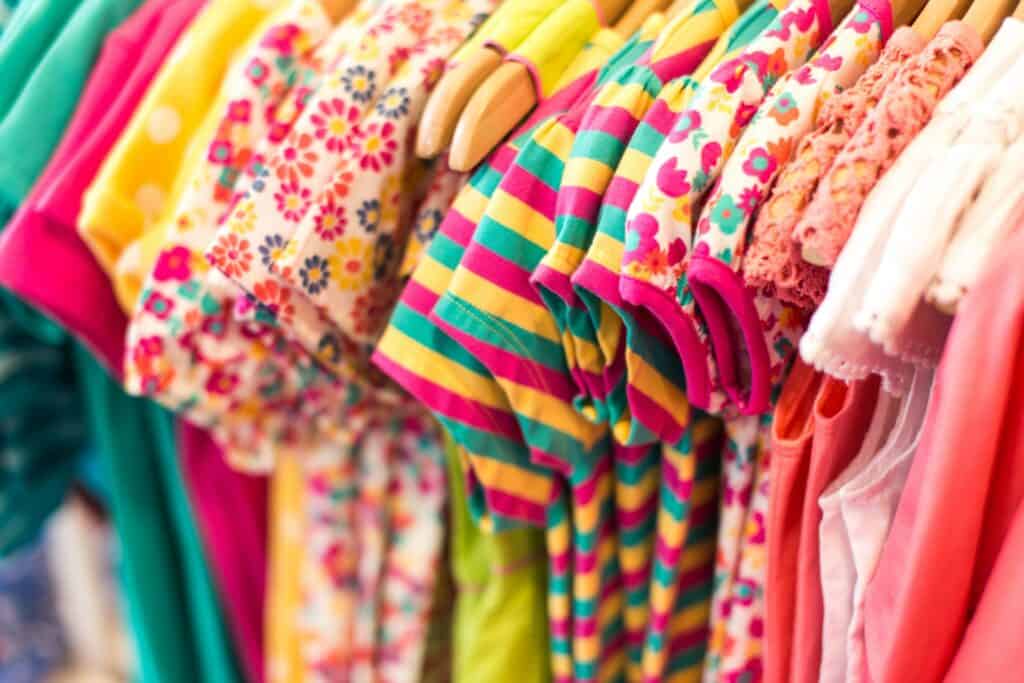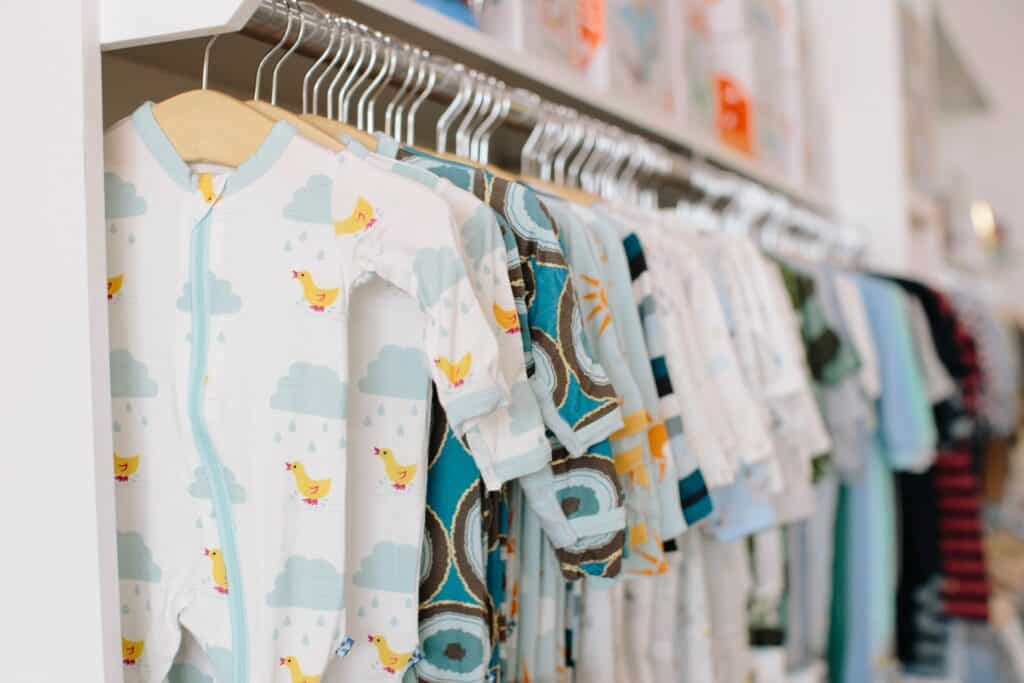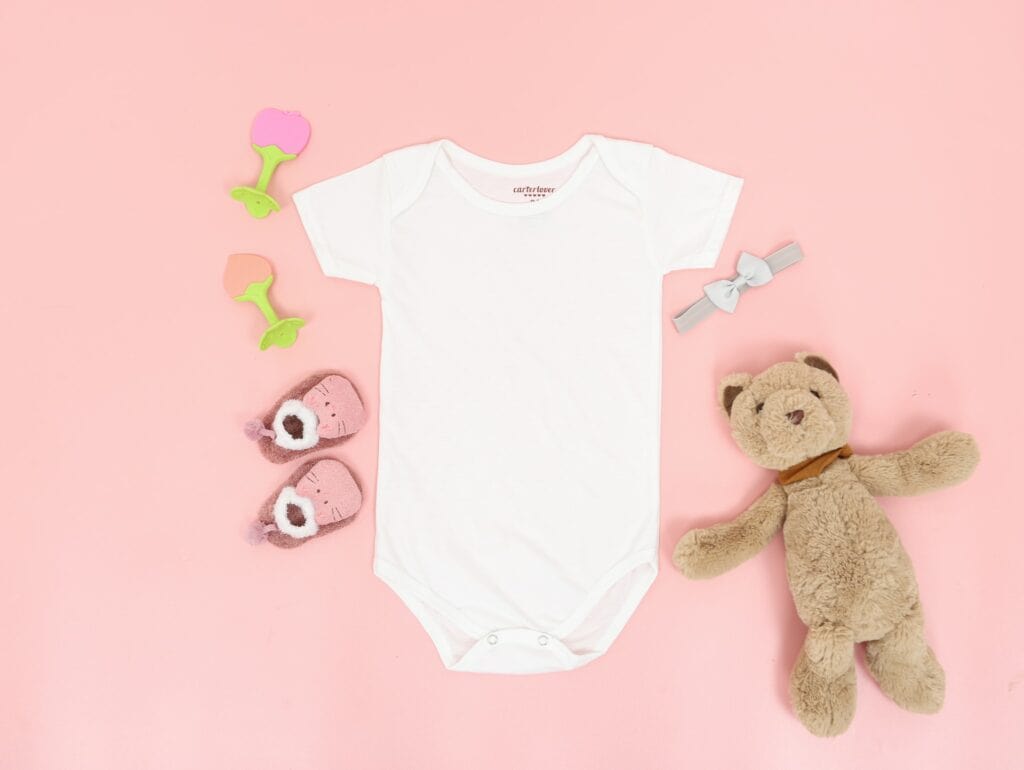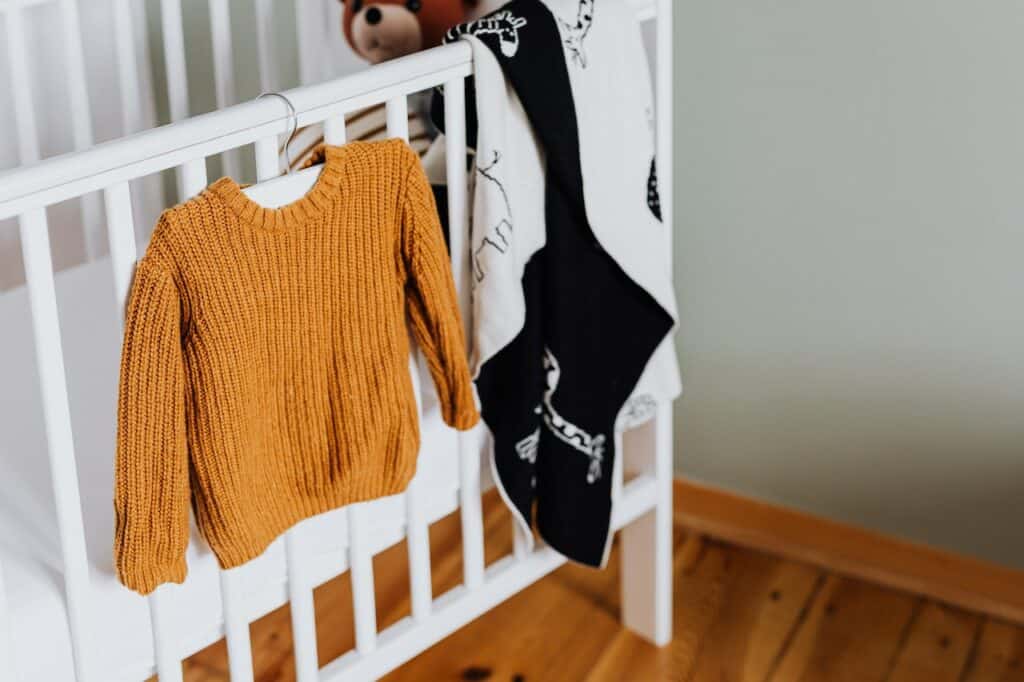Parents often find themselves asking how many baby clothes they need in each size. It can be overwhelming to figure out what to buy for a new baby, especially with so many options available. While it’s tempting to buy everything in sight, it’s important to keep in mind that babies grow quickly, and some clothes will only be worn a handful of times before they’re outgrown.
Understanding baby clothes sizes is key to figuring out how many of each size to buy. Baby clothing sizes are based on the baby’s weight and length, so it’s important to have an idea of what size your baby will be at birth. It’s also helpful to keep in mind that different brands may have slightly different sizing, so it’s a good idea to try on clothes before purchasing or to check the brand’s size chart.
When buying baby clothes, there are several factors to consider, such as the season, the baby’s activity level, and any special occasions. Essential baby clothes for newborns include onesies, sleepers, and hats, while older babies may need more durable clothing for crawling and playing. It’s also important to consider how often you plan on doing laundry and how you will organize the baby’s clothes.
Key Takeaways
- Understanding baby clothes sizes is key to figuring out how many of each size to buy.
- Essential baby clothes for newborns include onesies, sleepers, and hats.
- It’s important to consider factors such as the season, the baby’s activity level, and any special occasions when buying baby clothes.
Understanding Baby Clothes Sizes
When it comes to baby clothes, it can be confusing to figure out what size to buy for your little one. Understanding baby clothes sizes is essential to ensure that your baby is comfortable and well-dressed. In this section, we will cover the basics of baby clothes sizing, including how to read a sizing chart and how to determine which size to buy for your baby.

Most baby clothing brands use age as a guide for sizing, but keep in mind that babies come in all shapes and sizes, so it’s important to measure your baby before making a purchase. To determine your baby’s size, measure their chest, waist, and hips and compare the measurements to the brand’s sizing chart.
It’s also important to note that baby clothes sizes can vary by brand and country. For example, European baby clothes sizes may differ from American baby clothes sizes. Be sure to check the sizing chart for each brand you are considering purchasing from.
Newborn size typically fits babies up to 8 pounds and 21.5 inches long. 0-3 months size fits babies up to 12 pounds and 23.5 inches long. 3-6 months size fits babies up to 16 pounds and 26.5 inches long. 6-9 months size fits babies up to 20 pounds and 28.5 inches long.
As babies grow, they will move into infant, toddler, and children’s sizes. Infant sizes include 12 months, 18 months, and 24 months. Toddler sizes include 2T, 3T, and 4T.
In conclusion, understanding baby clothes sizes is crucial for ensuring your baby is comfortable and well-dressed. Always measure your baby before making a purchase and check the sizing chart for each brand you are considering purchasing from. Remember that baby clothes sizes can vary by brand and country, so it’s important to be aware of this when shopping for your little one.
Also, read: What Size is 1T in Months
What to Consider when Buying Baby Clothes
When it comes to buying baby clothes, there are several factors to consider to ensure that you get the right clothes for your little one. Here are some things to keep in mind:
Weight and Height
Babies grow quickly, and their weight and height can vary greatly in the first year of life. It’s important to choose clothes that fit well and are comfortable for your baby. Be sure to check the sizing chart for each brand as they can vary.
Length
Some babies are longer than others, so it’s important to consider the length of the clothes you buy. You don’t want clothes that are too short, as they can ride up and become uncomfortable for your little one.
Fabric
Baby skin is delicate and sensitive, so it’s important to choose clothes made from soft, breathable fabrics. Cotton is a good choice as it’s gentle on the skin and easy to care for.
Tags and Labels
Some baby clothes come with tags and labels that can irritate your baby’s skin. Look for clothes with minimal tags and labels, or remove them before dressing your baby.
Brands
There are many baby clothing brands to choose from, each with its own style and quality. It’s important to choose a brand that you trust and that fits your budget.
Trial and Error
Finding the right clothes for your baby may take some trial and error. Don’t be afraid to try different brands and styles until you find what works best for your little one.
Budget
Baby clothes can be expensive, so it’s important to set a budget and stick to it. Look for sales and discounts to help you save money.
Baby Registry
Creating a baby registry can be a helpful way to ensure that you get the clothes you need for your little one. Be sure to include a variety of sizes and styles to accommodate your baby’s growth and changing needs.
Baby Clothing Registry
Some retailers offer a baby clothing registry, which allows you to choose the clothes you want for your little one and share the registry with family and friends. This can be a convenient way to get the clothes you need while also receiving gifts from loved ones.
By considering these factors when buying baby clothes, you can ensure that your little one is comfortable and stylish from day one.
Essential Baby Clothes for Newborns
When preparing for a new arrival, it can be overwhelming to determine how many baby clothes are needed in each size. For newborns, it’s important to have a few essential items on hand to keep them comfortable and cozy.

One of the most important pieces of clothing for newborns is onesies. These versatile garments can be worn alone or as a layer under other clothing. It’s recommended to have at least 5-7 onesies in newborn size.
Sleepers are another must-have for newborns. These one-piece outfits are perfect for bedtime and make diaper changes a breeze. It’s recommended to have 3-5 sleepers in newborn size.
Socks, hats, and booties are also important for keeping newborns warm and comfortable. It’s recommended to have 2-3 pairs of socks, 1-2 hats, and 1-2 pairs of booties in newborn size.
Bodysuits, rompers, and gowns can also be useful for newborns. Bodysuits and rompers are great for layering, while gowns make diaper changes easier. It’s recommended to have 2-3 of each in newborn size.
Swaddles and mittens can also be helpful for newborns. Swaddles can help soothe fussy babies and mittens can prevent them from scratching their faces. It’s recommended to have 1-2 swaddles and 1-2 pairs of mittens in newborn size.
Finally, a coming-home outfit and special occasion additions can add a touch of style to your newborn’s wardrobe. It’s recommended to have 1-2 coming-home outfits and 1-2 special occasion outfits in newborn size.
Overall, having a few essential items in newborn size can ensure that your baby is comfortable and cozy during their first few weeks of life.
Baby Clothes for Different Ages
When it comes to baby clothes, it’s important to keep in mind that babies grow quickly. It’s easy to get carried away and buy too many clothes in one size, only to find that your baby has outgrown them before they’ve even had a chance to wear them. Here’s a breakdown of how many baby clothes you’ll need for different ages:
Preemie
If your baby is born prematurely, they’ll likely need special preemie-sized clothing. It’s a good idea to have a few preemie-sized outfits on hand, but don’t go overboard as your baby will likely grow out of them quickly.
0-3 Months
During the first few months of your baby’s life, they’ll go through a lot of clothes as they grow rapidly. Here’s a rough estimate of how many of each type of clothing you’ll need:
- 6-8 bodysuits
- 6-8 one-piece outfits
- 4-6 two-piece pajama sets
- 4-6 footed pajamas
- 4-6 pairs of pants or leggings
- 2-3 sweaters or sweatshirts
- 1-2 pieces of outerwear (depending on the season)
Summer Baby
If your baby is born in the summer months, you’ll want to focus on lightweight, breathable clothing. Here are a few things to keep in mind:
- Opt for short-sleeved bodysuits and rompers
- Look for lightweight cotton pants or shorts
- A sun hat is a must-have to protect your baby’s delicate skin
Winter Baby
If your baby is born in the winter months, you’ll want to focus on warm, cozy clothing. Here are a few things to keep in mind:
- Look for long-sleeved bodysuits and one-piece outfits
- Footed pajamas are a great option for keeping your baby warm at night
- Invest in a winter coat or bunting to keep your baby warm when you’re out and about
Overall, it’s important to remember that every baby is different and may require more or less clothing depending on their individual needs. By starting with these guidelines, you can ensure that you have enough clothes to keep your baby comfortable and stylish without going overboard.
Clothing for Special Occasions
When it comes to special occasions, such as a baby shower or a family gathering, parents may want to dress their little ones in something extra special. While it’s not necessary to have a full wardrobe of fancy clothes, it’s nice to have a few pieces on hand for those special moments.
For baby showers, consider adding a cute and comfortable outfit to your registry. This could be a dress or suit for a girl or boy, respectively, or a cute onesie with a fun design. Keep in mind that the outfit should be easy to put on and take off, as well as comfortable for the baby to wear.
For other special occasions, such as weddings or holiday gatherings, parents may want to invest in a few more formal outfits. A dress or suit is always a classic option, but there are also plenty of cute and stylish options available. Consider a romper with a bow tie for a boy, or a tutu dress for a girl.
It’s important to remember that babies grow quickly, so don’t go overboard on special occasion outfits. One or two outfits for each size should be sufficient, depending on how many events you plan on attending. And don’t forget to consider the weather – a warm coat or sweater may be necessary for cooler months.
Overall, having a few special occasion outfits on hand can make those moments even more memorable. Just remember to keep it simple and comfortable for your little one.
Laundry and Care for Baby Clothes
When it comes to laundry and care for baby clothes, there are a few things to keep in mind to make sure they stay clean, soft, and comfortable for your little one.

First, it’s important to wash all new baby clothes before your baby wears them. This will help remove any chemicals or irritants that may be on the fabric from the manufacturing process. Use a gentle, baby-safe detergent and avoid using fabric softeners or dryer sheets, as they can irritate your baby’s sensitive skin.
When washing baby clothes, separate them by color and fabric type to avoid any color bleeding or damage to delicate fabrics. It’s also a good idea to wash baby clothes separately from the rest of your laundry to avoid any cross-contamination with other fabrics.
To prevent shrinkage, it’s best to wash baby clothes in cold water and avoid using hot water or high heat in the dryer. Hang dry or use a low heat setting instead.
If your baby has sensitive skin or allergies, consider using a hypoallergenic detergent or adding a cup of white vinegar to the rinse cycle to help remove any remaining detergent residue.
By following these simple tips, you can keep your baby’s clothes clean, soft, and comfortable for them to wear.
Organizing Baby Clothes
Organizing baby clothes can be a daunting task for new parents. It is important to keep the clothes organized by size, so you can easily find what you need when you need it. Drawer dividers are a great way to separate the different sizes of clothes. This will not only help you find what you need quickly but also make it easier to put clothes away.
When organizing baby clothes, it is important to keep in mind how many clothes you need in each size. The number of clothes you need will vary depending on how often you plan on doing laundry. It is recommended to have at least 7-10 outfits in each size. This will give you enough clothes to last a week without having to do laundry every day.
If you are shopping at Baby Gap or other baby clothing stores, it is important to keep in mind that their sizes may vary. Always check the size chart before making a purchase. It is also a good idea to buy a few items in the next size up, so you have clothes ready when your baby grows out of their current size.
In addition to drawer dividers, you can also use hanging organizers to keep baby clothes organized. These are great for storing items that are not folded, such as onesies and sleepers. Hanging organizers can be hung in the closet or on a hook, making it easy to access the clothes you need.
Overall, organizing baby clothes can be a simple task as long as you keep the clothes organized by size and have enough clothes to last a week. Drawer dividers and hanging organizers are great tools to help keep baby clothes organized and easy to find.
Understanding Growth Spurts
Babies grow at different rates, but most of them go through growth spurts during the first year of their lives. Growth spurts are periods when babies grow rapidly, and they can last anywhere from a few days to a few weeks. During these periods, babies may need more food and more sleep than usual.

It’s important to understand growth spurts when planning how many baby clothes to buy in each size. Babies grow quickly, and they may outgrow their clothes faster than you expect. Here are some things to keep in mind:
- Growth spurts can happen at any time, but they are most common during the first year of life.
- Babies may go through several growth spurts during their first year, typically around 2-3 weeks, 6 weeks, 3 months, 6 months, and 9 months.
- During growth spurts, babies may be more fussy and clingy than usual. They may also sleep more or less than usual, and they may want to eat more often.
- Babies may grow as much as an inch or more during a growth spurt, which can make a big difference in how their clothes fit.
To make sure you have enough clothes for your baby, it’s a good idea to have a mix of sizes on hand. Here are some general guidelines:
- Newborn size: 5-8 outfits
- 0-3 months size: 8-10 outfits
- 3-6 months size: 8-10 outfits
- 6-9 months size: 6-8 outfits
- 9-12 months size: 6-8 outfits
Keep in mind that these are just general guidelines, and your baby may grow faster or slower than average. It’s always a good idea to have a few extra outfits on hand, just in case.
Related Posts:
Frequently Asked Questions
What is the typical number of baby clothes needed per size?
The number of baby clothes needed per size varies depending on how often you plan to do laundry. As a general rule, it’s good to have around 7-10 outfits per size, including onesies, sleepers, and pants. This ensures you have enough clothing to get through a week without having to do laundry every day.
How do I determine the right amount of baby clothes to buy?
To determine the right amount of baby clothes to buy, consider how often you plan to do laundry, your baby’s size, and the season. It’s also a good idea to have a mix of clothing for different occasions, such as playtime, outings, and bedtime.
What are the most important baby clothing items to have in each size?
The most important baby clothing items to have in each size are onesies, sleepers, and pants. These items are versatile and can be mixed and matched with other clothing items to create different outfits.
What is the difference between newborn and 0-3 month sizes?
Newborn sizes are designed for babies up to 8 pounds, while 0-3 month sizes are designed for babies between 8-12 pounds. Newborn sizes are generally shorter and narrower than 0-3 month sizes.
What is the average lifespan of baby clothes in each size?
The lifespan of baby clothes in each size varies depending on how often they are worn and washed. On average, baby clothes in each size can last up to 3-6 months before they are outgrown or worn out.
What are some recommended baby clothing brands for each size?
Some recommended baby clothing brands for each size include Carter’s, Gerber, and Old Navy. These brands offer a wide range of clothing options in different sizes and styles at affordable prices.

Iesha is a loving mother of 2 beautiful children. She’s an active parent who enjoys indoor and outdoor adventures with her family. Her mission is to share practical and realistic parenting advice to help the parenting community becoming stronger.
